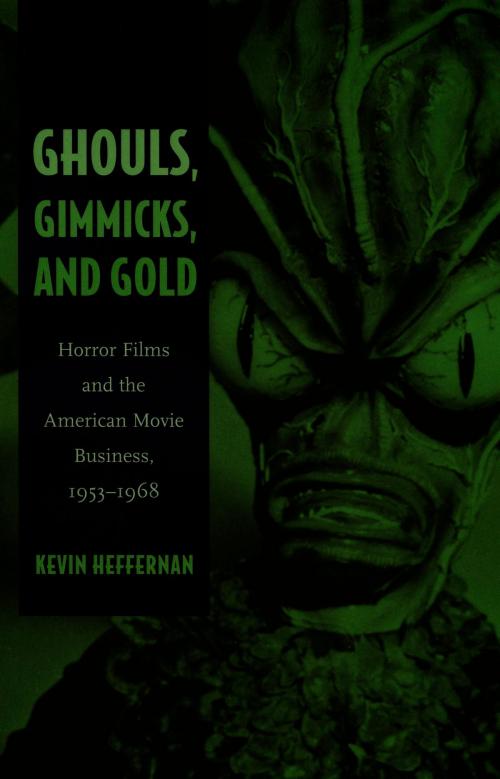Ghouls, Gimmicks, and Gold
Horror Films and the American Movie Business, 1953–1968
Nonfiction, Entertainment, Performing Arts, Business Aspects, Film, History & Criticism| Author: | Kevin Heffernan | ISBN: | 9780822385554 |
| Publisher: | Duke University Press | Publication: | March 25, 2004 |
| Imprint: | Duke University Press Books | Language: | English |
| Author: | Kevin Heffernan |
| ISBN: | 9780822385554 |
| Publisher: | Duke University Press |
| Publication: | March 25, 2004 |
| Imprint: | Duke University Press Books |
| Language: | English |
The Creature from the Black Lagoon, the Tingler, the Mole People—they stalked and oozed into audiences’ minds during the era that followed Boris Karloff’s Frankenstein and preceded terrors like Freddy Krueger (A Nightmare on Elm Street) and Chucky (Child’s Play). Ghouls, Gimmicks, and Gold pulls off the masks and wipes away the slime to reveal how the monsters that frightened audiences in the 1950s and 1960s—and the movies they crawled and staggered through—reflected fundamental changes in the film industry. Providing the first economic history of the horror film, Kevin Heffernan shows how the production, distribution, and exhibition of horror movies changed as the studio era gave way to the conglomeration of New Hollywood.
Heffernan argues that major cultural and economic shifts in the production and reception of horror films began at the time of the 3-d film cycle of 1953–54 and ended with the 1968 adoption of the Motion Picture Association of America’s ratings system and the subsequent development of the adult horror movie—epitomized by Rosemary’s Baby. He describes how this period presented a number of daunting challenges for movie exhibitors: the high costs of technological upgrade, competition with television, declining movie attendance, and a diminishing number of annual releases from the major movie studios. He explains that the production and distribution branches of the movie industry responded to these trends by cultivating a youth audience, co-producing features with the film industries of Europe and Asia, selling films to television, and intensifying representations of sex and violence. Shining through Ghouls, Gimmicks, and Gold is the delight of the true horror movie buff, the fan thrilled to find The Brain that Wouldn’t Die on television at 3 am.
The Creature from the Black Lagoon, the Tingler, the Mole People—they stalked and oozed into audiences’ minds during the era that followed Boris Karloff’s Frankenstein and preceded terrors like Freddy Krueger (A Nightmare on Elm Street) and Chucky (Child’s Play). Ghouls, Gimmicks, and Gold pulls off the masks and wipes away the slime to reveal how the monsters that frightened audiences in the 1950s and 1960s—and the movies they crawled and staggered through—reflected fundamental changes in the film industry. Providing the first economic history of the horror film, Kevin Heffernan shows how the production, distribution, and exhibition of horror movies changed as the studio era gave way to the conglomeration of New Hollywood.
Heffernan argues that major cultural and economic shifts in the production and reception of horror films began at the time of the 3-d film cycle of 1953–54 and ended with the 1968 adoption of the Motion Picture Association of America’s ratings system and the subsequent development of the adult horror movie—epitomized by Rosemary’s Baby. He describes how this period presented a number of daunting challenges for movie exhibitors: the high costs of technological upgrade, competition with television, declining movie attendance, and a diminishing number of annual releases from the major movie studios. He explains that the production and distribution branches of the movie industry responded to these trends by cultivating a youth audience, co-producing features with the film industries of Europe and Asia, selling films to television, and intensifying representations of sex and violence. Shining through Ghouls, Gimmicks, and Gold is the delight of the true horror movie buff, the fan thrilled to find The Brain that Wouldn’t Die on television at 3 am.















